
Audi’s commitment to the RS3 – and in particular its much-loved inline-five engine – deserves some respect. For a long time, the original version, despite very few being made, was derided as too numb, too imprecise, too unsatisfying versus its rivals. Such a great engine deserved a better car was the general consensus. So that’s what Audi, over the course of almost 15 years, toiled away at achieving. The move from 8P to 8V was a significant step, the ferocious speed now paired to a more capable chassis – with options like ceramic brakes and magnetic dampers that would have been on a supercar spec sheet just a few years earlier.
The facelift of that car in 2017 was better than it tends to get credit for, thanks chiefly to a new evolution of the 2.5-litre EA855 unit, with 33hp added and 26kg subtracted. And a boot in the backside, if so desired. That same powertrain carried over to 2021’s 8Y, albeit now with a very clever torque vectoring rear differential. It was a Nürburgring record breaker, and this writer’s favourite car of 2021; both would have seemed impossible a mere decade earlier. And not content with all that, Audi Sport had another go at an RS3 with a sense of humour last year; the PH verdict was unequivocal: ‘It had great qualities before and they’re still there, but now it has an even better front end. It’s better on track and, importantly, better on the road, too.’ It might look a tad OTT, and the 2015 interior was nicer, but as a driving device, Audi has most certainly saved the best until last.
Yet even the most optimistic of five-cylinder enthusiasts must now see the writing on the wall. Look at the rest of the Audi range, and the 2.5 stands out like a sore thumb. While the maker has rowed back from its EV-only pledge, it feels like performance derivatives with engines will be four-, six- or eight-cylinder from now on. See the latest V6, mild-hybrid S5, and upcoming V8 RS6 PHEV. Far from a bad mix, albeit with one conspicuous absentee. It’s hard to imagine the business case going forward for a 30mpg, 200g/km-plus engine that only goes in one model, especially with Euro 7 looming.
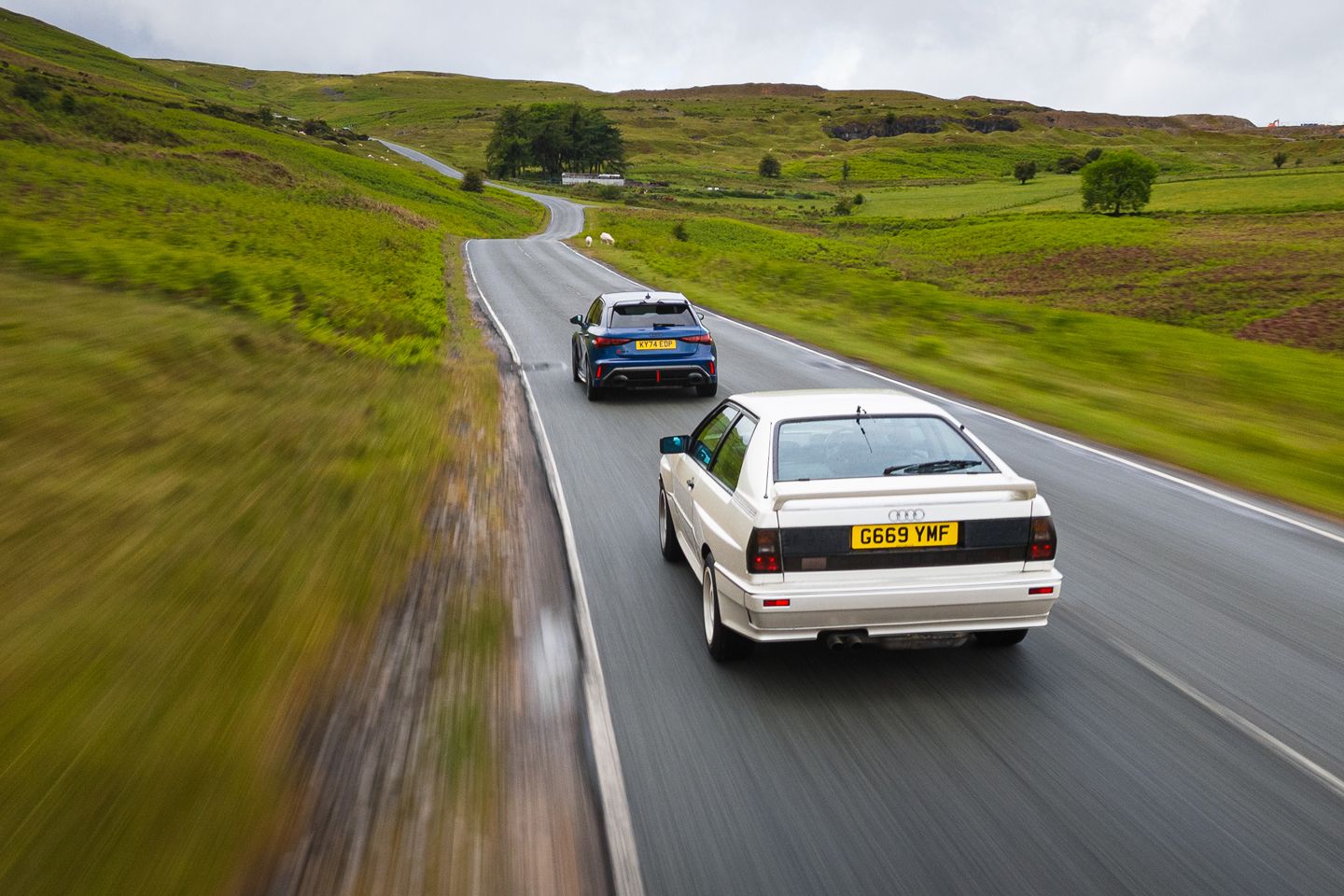
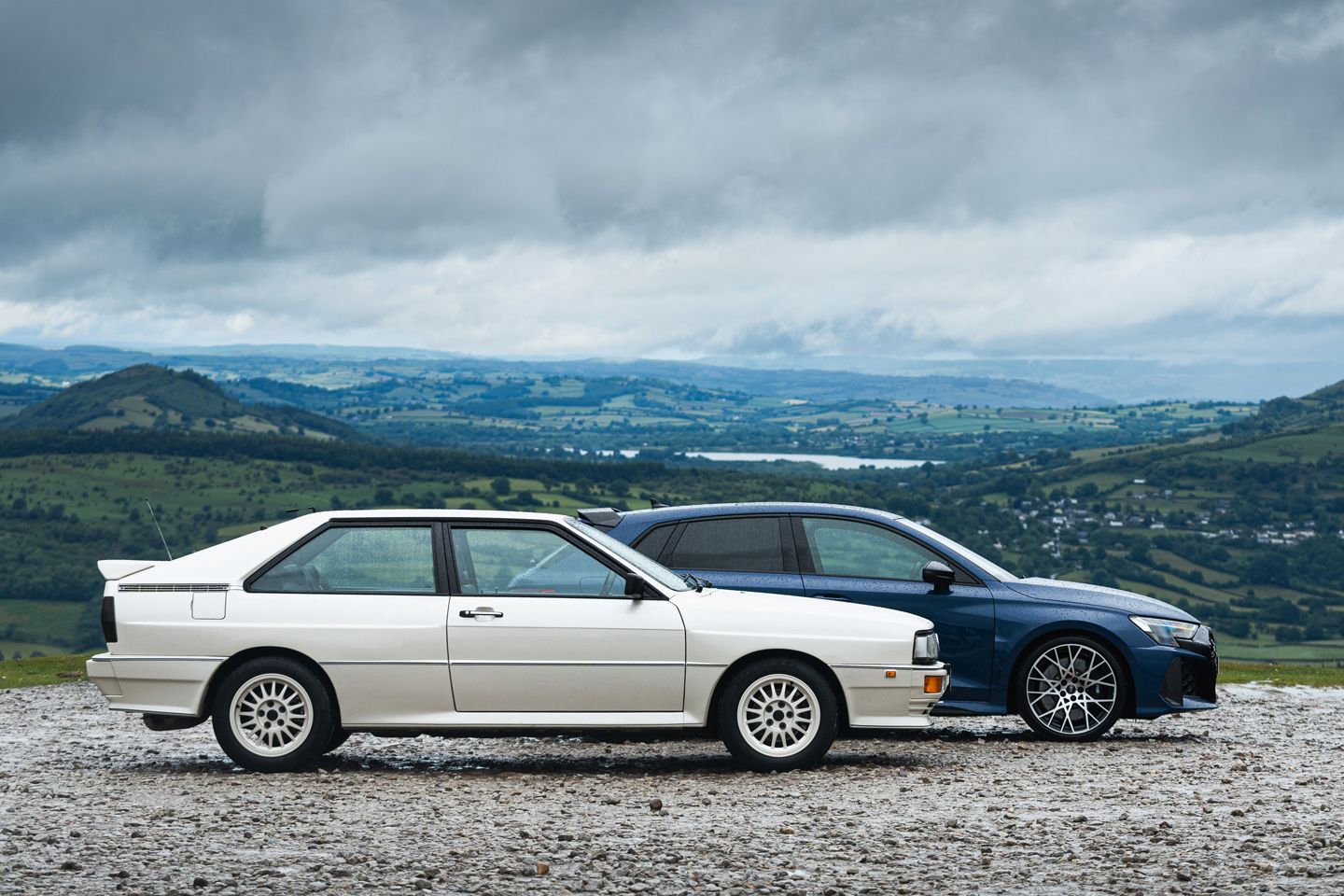
Trouble is, Audi without a five-cylinder turbocharged engine is like Honda without high-revving four-pots or BMW lacking a straight six. The configuration is so central to the enthusiast’s view of its brand appeal that it’s hard to imagine a world without it. The entire history and reputation of Audi is significantly different without the five-pot. Nevertheless, we’re surely nearing the end.
So it only seemed appropriate, with our own long-term RS3 set to go back, to see where the five-cylinder Audi has come in 40 years or so. And with it, quattro – the only technology that could be said to better define what four interlocking rings actually mean. What began as a prototype 80 with VW Iltis running gear has become one of the most enduring (and much copied) bits of technology ever introduced to a modern road car. There’s been innovation throughout the story of five-cylinder quattros, all the way back to using a hollow gearbox output shaft for the original (so another shaft could go through it for front axle drive); electrification opens up all manner of possibilities for four-driven wheels as well, even if it means the five-cylinder’s likely demise. On-demand all-wheel drive has a bright future, whatever fate has in store for combustion.
What’s coming next is for another day. But wherever the RS3 goes from here, its spirit surely originates in an automotive icon: the Quattro. While not a direct descendant, the similarities between the two Audis are too numerous to ignore – and they extend beyond the engine configuration. What better way to establish if there really are tangible commonalities between cars 40 years apart – i.e. what’s improved in that time, what hasn’t, and what it is that makes four-wheel-drive, five-cylinder Audis so special – than bringing them both to South Wales for 24 hours? We organised the rain and everything.
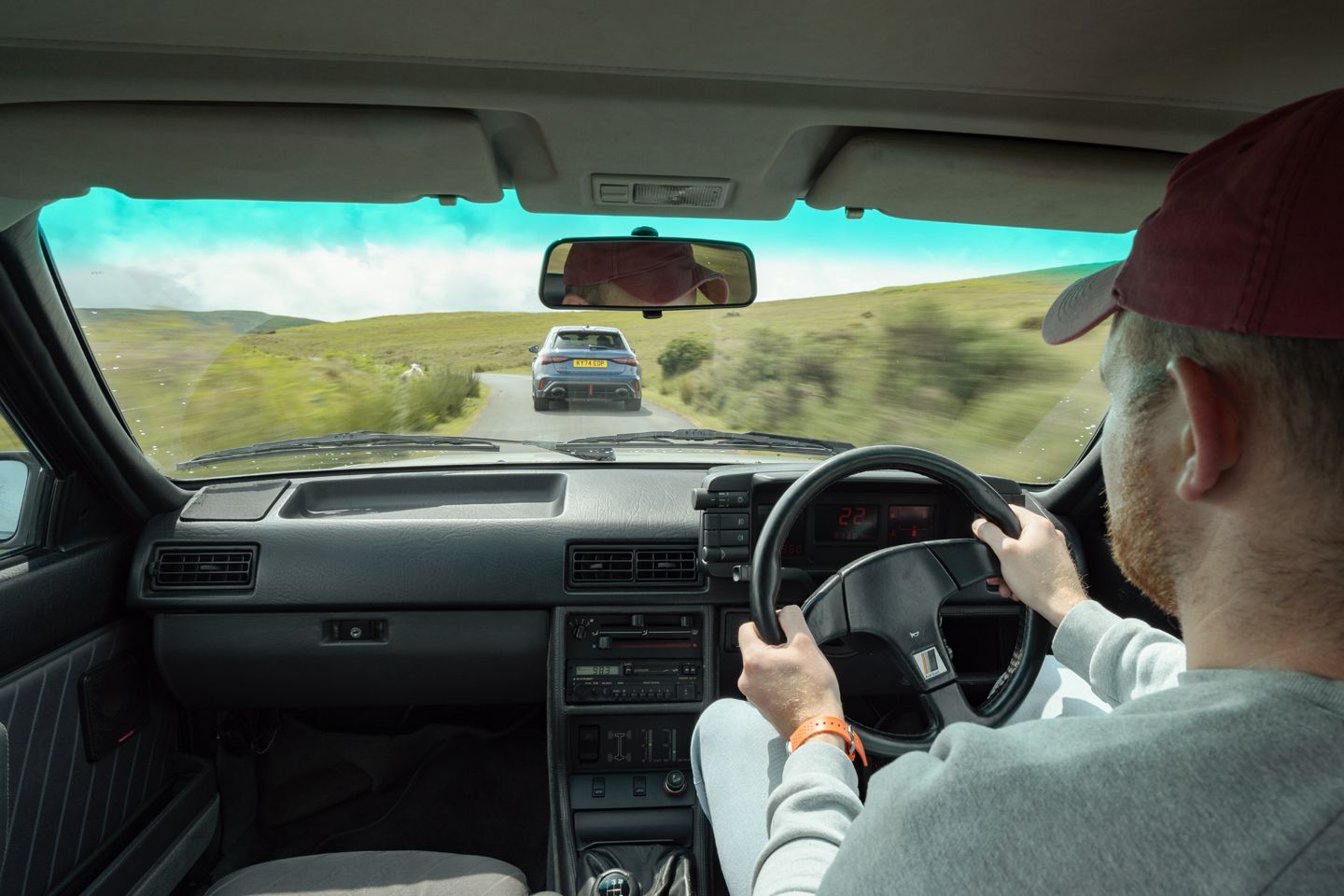
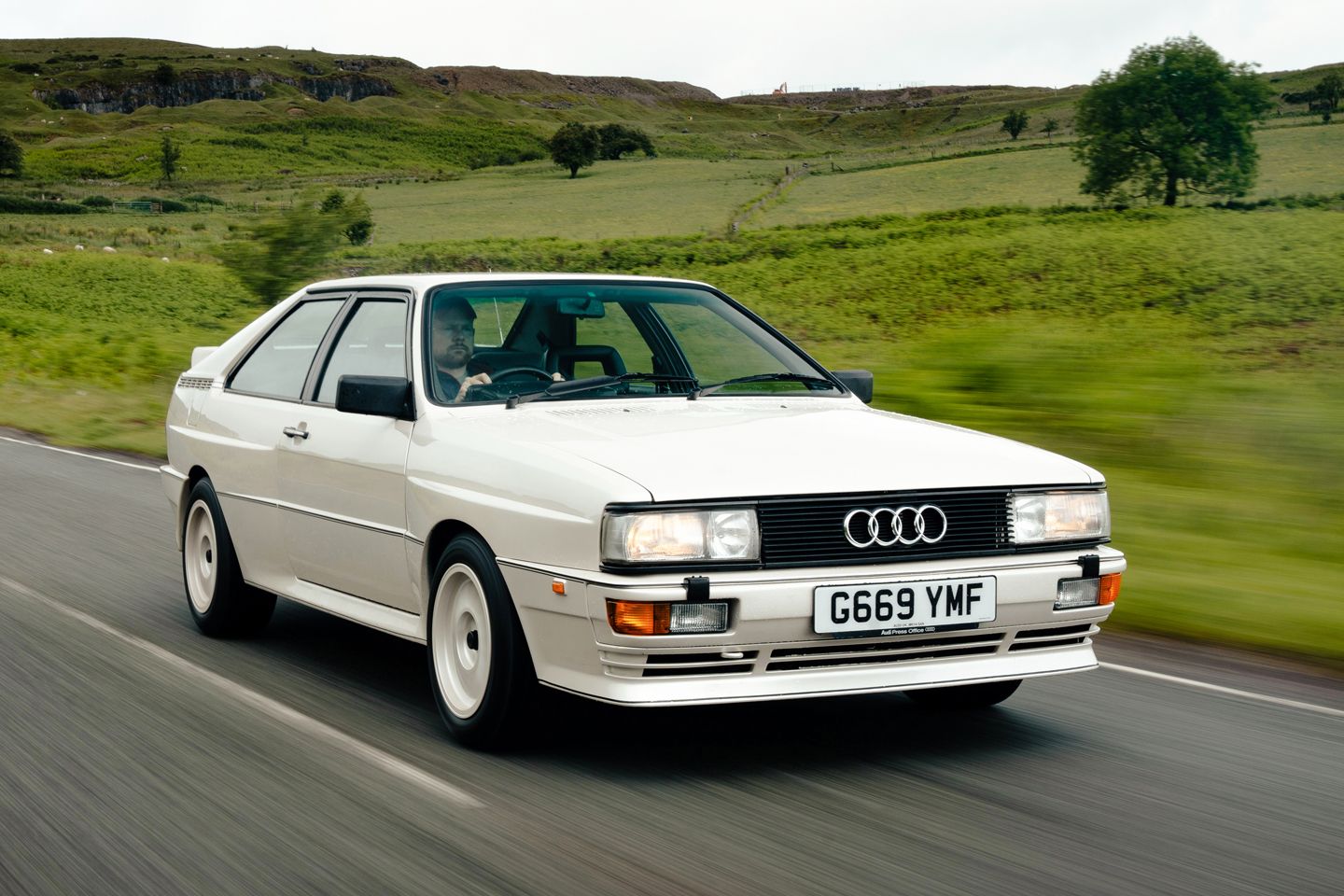
For a start, little more than 250cc separates this pair of 20-valve five-pots; the EA855 has grown just 10cc since 2011, while the switch from 10 valves to 20 in the Quattro from 1988 saw capacity climb from 2,144 to 2,226cc. More than just the on-paper stuff, though, there’s the fact that both Quattro and RS3 squeeze an engine of such personality – longitudinally back then, properly peeking through the grille, transversely now – into practical, usable cars. The Autocar road test of a 20-valve from 1990 is fascinating, the Quattro approaching 10 years old then but still praised for its full four-seat cabin, smart materials, and generous standard equipment. These days a good amount of the RS3’s appeal is in its compact, exploitable dimensions in a sea of XXL performance cars, along with the sort of family friendliness that any A3 can offer.
Both Quattro and RS3 even have daft digital dashes, which wasn’t an expected attribute to share. “The orange digital instruments provide a garish contrast,” said Autocar 35 years ago, “it’s faintly ironic that Audi’s most conspicuous stab at modernity should now seem slightly passe.” Miaow. Certainly, it clashes with the stoic layout of the rest of the cabin, if still representing a lovely bit of nostalgia. The RS Runway layout that’s possible in the RS3 neatly sums up the cabin’s general vibe, which still seems to be rather dubious style over much substance. It seems unlikely to evoke any wistful reminiscing decades down the line – an original 8P might.
With its punchy styling add-ons, the RS3 won’t be mistaken for anything else these days (where it may once have been); the Quattro you can still identify at 100 paces. Passersby want to know if it really is what they think it is; the white wheels with white paint look as good as you’d hope, and there’s still incredible presence for a car of this vintage and this size. Even without the Sport Quattro’s dramatic wheelbase hack or the visual wallop of a modern RS, it’s impossible to look away. ‘Besotted’ would probably best describe most who encounter it.


If we’re now at the ultimate evolution of the RS3 with this latest facelift, the 20-valve represents the same for the Quattro (excepting the squared-off homologation special Sport, of course). Power climbed 10 per cent with the 10 extra valves, and there was a useful bump in torque to 218lb ft. While cosmetically very similar, the later Quattros also benefitted from a new five-speed manual, mild suspension tweaks and a Torsen diff to replace the original setup. Autocar suggested it ‘added a little more spice to the basic cocktail of immense stability and unshakeable security’, making the Quattro less prone to understeer and even faster away from bends. (And you thought journalists whingeing about front-end push in Audis was a new thing.)
Indeed, perhaps the biggest surprise of driving YMF in 2025 is just how contemporary a lot of the experience feels. Oh, sure, the brakes are pants and the gearshift is agricultural, but the Quattro’s ability to engender great confidence – even in inclement weather – is straight from the modern Audi playbook. There’s always grip despite modest rubber, always performance despite modest outputs (because nothing is being squandered), and just enough relayed back about the car and the road to really crack on. What was probably a large coupe once upon a time now feels perfectly sized for dissecting a typical B road, too.
The Quattro remains capable even by modern standards, so at the fall of the Berlin Wall, when a sports car was an Alfa Spider and a hot hatch a 205 GTI, it must have felt like a spaceship Against the RS3, of course, it requires a little bit of patience – the steering in particular much slower – however, work with its foibles and the Quattro remains properly quick. You heave that wheel where you want to go, jump on the gas, and arrive at your intended destination without hesitation or deviation, every single time. It’s quite some party trick.
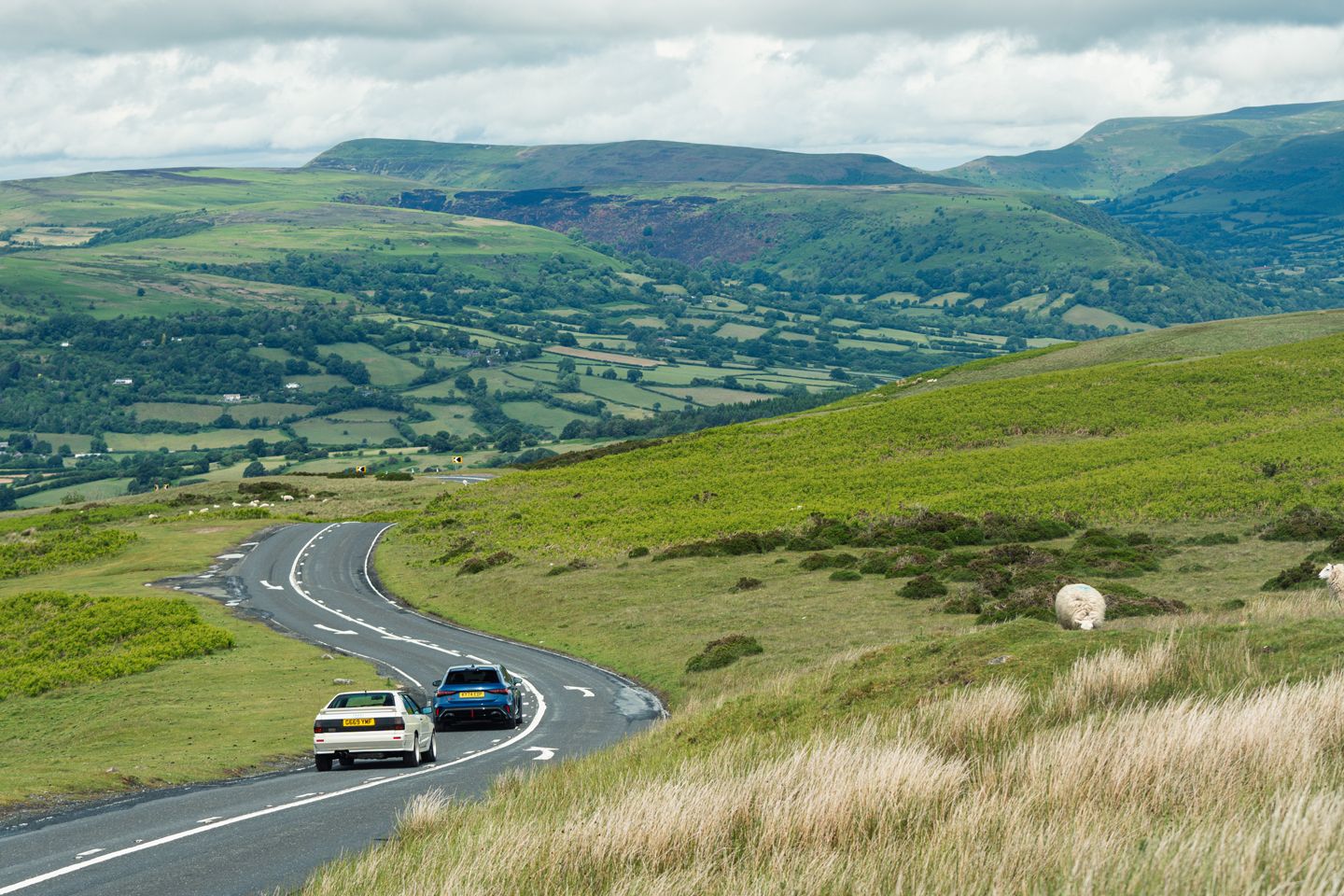

What a wonderful lump, too. Somewhat against expectation (again), the 2.2 is not beset by enormous amounts of lag; it’s sleepier in its lower reaches, sure, but not torpid. Once above 3,500rpm, it really flies, a familiar war cry enveloping your ears and digital speedo climbing in four and five-mile-per-hour increments to keep up. The ratios are a tad odd; the recorded maximum speeds in 1990 were 32mph, 58mph, 84mph, and 119mph in the first four gears, so once you’ve rowed back (and it really is a row) from third, then the Audi can feel off the boil by comparison. But the generous torque, unmistakable sound and big-hearted character leave an indelible mark. Even separated from the other, just one of the engine or drivetrain would have made the Quattro notable in the ’80s, so it’s easy to see how both together made it an instant icon.
Similarly, the Audi Sport-designed 2.5 won the RS3 plenty of fans, whether it was 340hp or 400hp, filtered or unfiltered, standard or modified. The torque vectoring rear diff really brought the four-cylinder Golf R to life as well. Combine the two – an engine of real personality with the chassis hardware to do it justice – and the result is an assuredly special hot hatch. After the old stager, the performance, of course, takes your breath away, and the gearbox beyond any comparison, yet the real takeaway is how similar this pair of five-cylinders feel. There’s that same slight hesitancy at low revs, the same great swell of torque through the mid-range, and the same (still quite surprising) top-end rush that’s common – and deeply likeable – about both. The old Audi drawls and thrashes and huffs and puffs through its revs, rally car buried in there somewhere; even with the filters, it’s the new Audi that truly revels in its five-cylinder status, warbling its heart out from idle to cut out. Both contribute that commodity we value above all others: character.
If the 20-valve realised the potential in the road-going Quattro, much the same could be said for this latest RS3. It has rounded off a few rough edges of the immediate predecessor, while somehow also sharpening up the experience even further. It’s so alert, so agile, so indefatigably sorted that it’s a little bit startling. Perhaps still a slightly artificially enhanced, though the thrill remains undeniable. Especially once your head gets around the idea of a front end with this unbeatable purchase and a rear axle that can also dictate attitude.

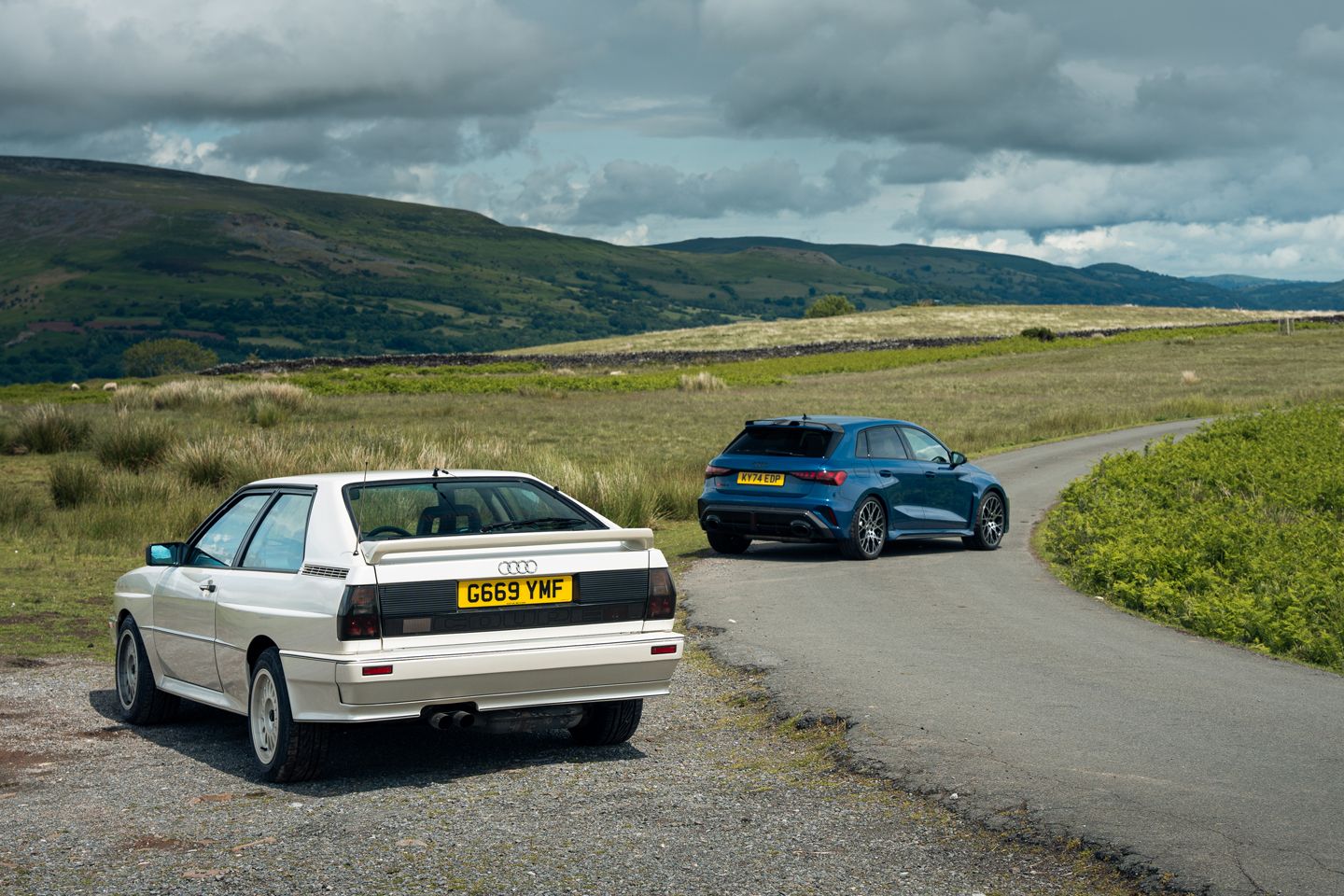
Crucially, the RS3 is receptive to however you want to drive, which makes for absorbing company on a wet and bumpy B road. And you don’t need us to remind you that that hasn’t always been the case; maybe this isn’t as truly groundbreaking in terms of 4WD tech as the classic, but it ain’t half entertaining. The brake pedal still isn’t quite right and the gearbox feels old, but what an experience. If only this thing looked how RS3s once did Audi would have a fitting farewell to its five-cylinder story.
Maybe that will still come; Audi has been known of late – see RS4 Competition, RS6 GT, and the RS3 Performance for Germany – to liberally apply the special sauce at unlikely moments. If this really is it for the five cylinders after almost half a century, they would be justified in marking the moment. Especially with such a good base car to begin from. Indeed, while driving the Quattro back-to-back with the RS3 has demonstrated the evolution of all-wheel-drive, five-cylinder Audis, it’s heartening to see where the cars are comparable as well. There’s performance beyond even the bare stats, immense all-weather ability, a sound to savour, and, for one reason or another, a uniquely captivating driving experience as well. The Quattro spirit remains alive and well in the RS3, one that simply wouldn’t exist without a very special engine.
SPECIFICATION | AUDI QUATTRO 20v
Engine: 2,226cc, five-cylinder turbo
Transmission: 5-speed manual, four-wheel drive.
Power (hp): 220@5,900rpm.
Torque (lb ft): 228@1,950rpm.
0-60mph: 6.3 seconds.
Top speed: 141mph.
Weight: 1,395kg (claimed, Autocar test 1,543kg).
MPG: 28.5 (steady 75mph claim, Autocar test 19mpg).
CO2: N/A.
On sale: 1988-1991.
Price new: £33,452 (1990).
SPECIFICATION | 2024 AUDI RS3 SPORTBACK
Engine: 2,490cc, five-cylinder, turbo.
Transmission: 7-speed dual-clutch auto, four-wheel drive.
Power (hp): 400@5,600-7,000rpm.
Torque (lb ft): 369@2,250-5,600rpm.
0-62mph: 3.8 seconds.
Top speed: 155mph (174mph with Carbon Vorsprung pack).
Weight: 1,640kg.
MPG: 30.4.
CO2: 211g/km.
Price: from £62,210.

